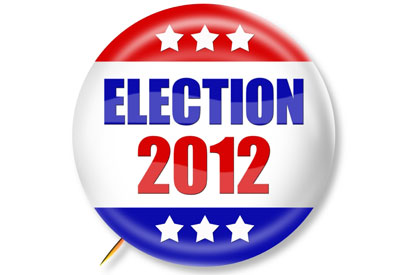New GOTV efforts could help Latino voters achieve political potential, says researcher
Some predict that Latino voters could flex some considerable political muscle in the 2012 presidential election and decide the contest, especially through their balloting in the swing states of Nevada, Colorado and Florida.
But Lisa García Bedolla, a University of California, Berkeley, expert on voter mobilization, says that even if they do, Latinos are far from casting votes in numbers that truly reflect their growing population and potential political power. The co-author of a new book, “Mobilizing Inclusion: Transforming the Electorate through Get-Out-the-Vote Campaigns” (Yale University Press, 2012) adds that revamping voter outreach efforts could easily increase current Latino voting statistics.

Approximately 12.2 million Latinos across the country are registered to vote and represent 8.7 percent of all U.S. voters, according to a Latino Decisions/impreMedia poll released this week. In the poll, 87 percent of those registered voters said they were almost certain to vote on Nov. 6. But a new Gallup poll predicts that Latinos will account for only 7 percent of the 2012 electorate, up just one percentage point compared to their turnout in the last presidential race.
In their book, García Bedolla and Melissa Michelson, a political science professor at Menlo College in Atherton, Calif., used rigorous experimental methods to determine the impact of the California Votes Initiative, a multi-year effort funded by the James Irvine Foundation to increase voting rates by infrequent voters. The initiative involved nine independent and non-profit community groups engaged in get-out-the-vote efforts with low-propensity registered voters in the state’s San Joaquin and Sacramento valleys, as well as in parts of Los Angeles, Orange, San Bernardino and Riverside counties.
The authors reviewed work over the course of six election cycles in California between 2006 and 2008. They considered the results from 286 field outreach efforts and more than 300,000 hours of field observation by a multi-racial and multi-lingual research team.
All that data showed that the following approaches work the best to stimulate voting:
- Make personal contact, either by knocking on doors or making phone calls. Don’t rely on impersonal mailers.
- Call back those voters who express an intention to vote. This can triple the impact of a phone bank.
- Voting is habit forming. Those voters that were contacted once between June 2006 and June 2008 were 30 percentage points more likely to vote in November 2008, even without a second contact.
“Having an actual person (making the contact) is what matters,” says García Bedolla, a UC Berkeley associate professor of education and political science, noting that the power of a personal appeal has been underestimated by outreach workers and political campaigns alike. And getting one family member to vote greatly increases the odds that others will, too, she added.
“Mobilizing Inclusion’s” evidence from the field highlighted some of the reasons why Latinos have tended to vote at lower rates than any other ethnic group: they are rarely asked to do so, and after a lifetime of stigmatism and exclusion, many feel left out of the electoral process.
García Bedolla recounts a story told to her by a California Votes canvasser about a 70-year-old Latino woman who broke into tears when approached by a volunteer urging her to vote. Why? García Bedolla says the woman had never in her life been asked by anyone to vote.
She also says Latinos generally do not receive as much election information as do other groups, and often what they do get is poorly translated into Spanish. Election materials are often very complex, says García Bedolla, noting the Golden State’s current 140-page-plus general election guide.
“What if English was not your original language?” she asks. “We have these incredibly high barriers to voting.”
When Latinos do join the registered voter fold, García Bedolla says some of them worry about making a mistake and leave the task to those they think are more experienced and knowledgeable.
But when Latinos do vote, she says, they, like others, proudly adopt the habit and are likely to vote again.
García Bedolla says both the Democratic and Republican parties have offered the Latino community little more than lip service when it comes to voter outreach. “You can’t just show up with a mariachi band,” she says, noting the lack of attention to weighty issues of concern to Latinos, such as immigration, in the presidential and vice presidential debates.
While Latino voters lean Democratic, she says that is largely due to historic identification with that party and the extremism on the Republican side, rather than to President Obama’s record on weighty issues such as immigration. Obama recently approved deferred action, which allows otherwise law-abiding young immigrants brought to the U.S. illegally as children to regularize their status for two years. Yet his administration has deported more immigrants than during the presidency of George W. Bush. Romney has his father’s Mexico ties, García Bedolla notes, but he hasn’t won widespread support from Latino voters with his proffered immigration policy of “voluntary self-deportation.”
